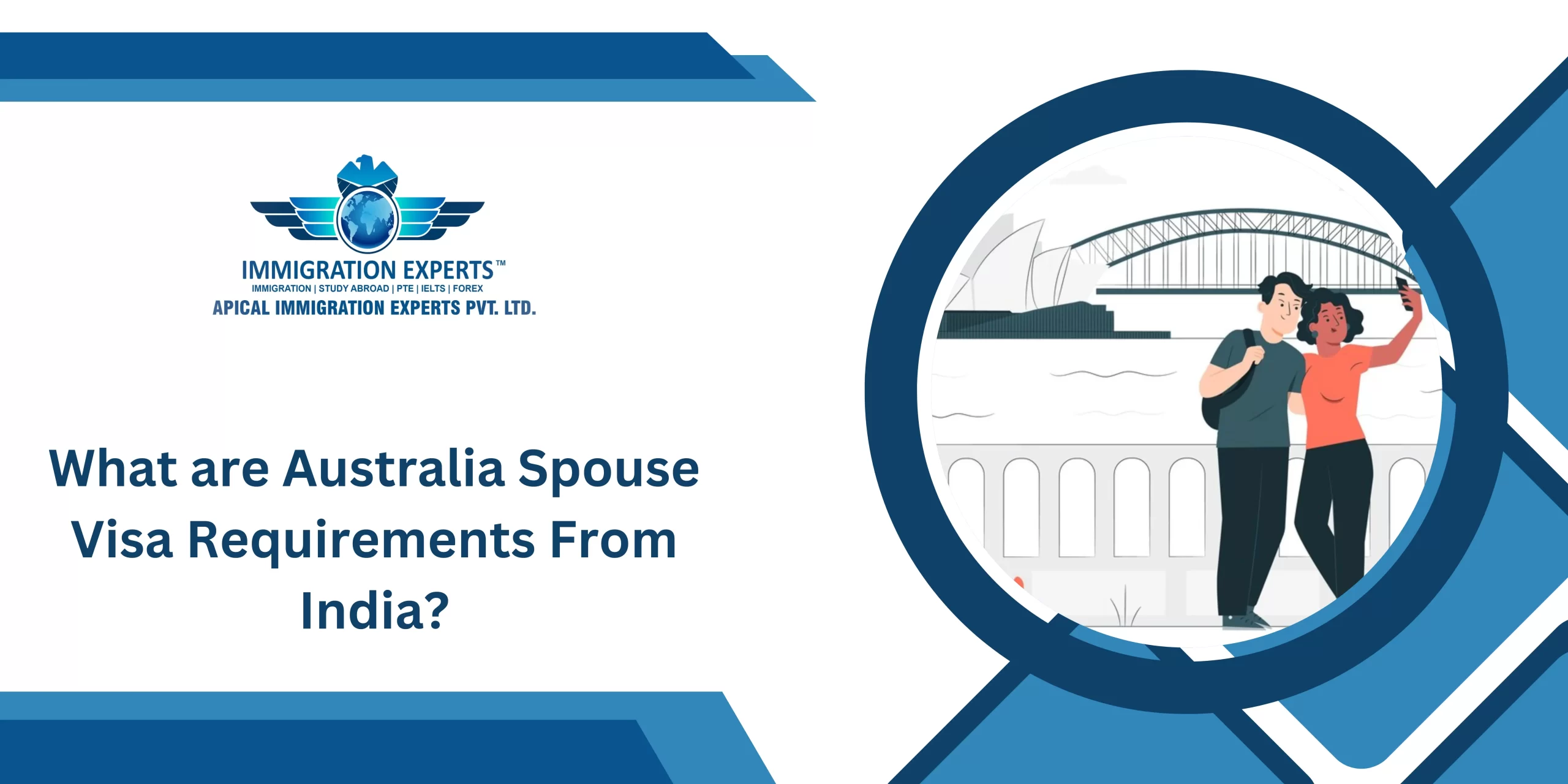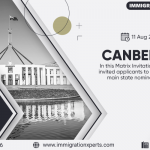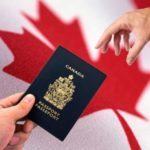If you’re married to, or in a de facto relationship with, an Australian citizen, permanent resident, or eligible New Zealand citizen, you may qualify for an Australia Partner (Spouse) Visa.
From India, most applicants use the offshore pathway: you first get a temporary visa (Subclass 309) and later a permanent visa (Subclass 100).
If you’re already inside Australia on another visa, you usually apply for Subclass 820 → 801. In every case, the heart of the application is the same: your relationship must be genuine and continuing, and your sponsor must be eligible.
The Importance of Meeting Australia Spouse Visa Requirements
Who can sponsor you?
Your sponsor must be your spouse or de facto partner and be either:
- an Australian citizen,
- an Australian permanent resident, or
- an eligible New Zealand citizen.
Sponsors are also assessed. Past sponsorships, character concerns, or visa history can affect approval. It’s smart to prepare the sponsor’s paperwork early so there are no last-minute surprises.
What case officers look for (the four pillars)
To test whether your relationship is real, case officers usually review evidence across four pillars:
- Financial – joint bank accounts, shared bills, money transfers, or proof of shared expenses.
- Household – living together, joint lease, property papers, or proof of shared responsibilities.
- Social – photos with family and friends, joint travel, invitations, and social proof.
- Commitment – personal statements, plans for the future, and ongoing communication.
A wedding album helps, but it’s not enough by itself. Show your life together over time, not just one day.
Documents you typically need (India context)
You lodge the application online and upload scans. Prepare:
- Identity: passport, birth certificate, and photos.
- Relationship proof: marriage certificate (if married), or evidence of a de facto relationship if not.
- Statements from both partners: how you met, how the relationship grew, key dates, and future plans.
- Supporting statements from friends or family (witness declarations).
- Sponsor documents: proof of citizenship or permanent residence, plus ID.
- Police certificates as requested.
- Medical examinations with approved panel clinics when instructed.
- Biometrics if you receive a request letter.
Character checks, PCC, and biometrics
You and, in some cases, your sponsor must meet character requirements. Expect to provide police certificates for any country you’ve lived in for 12 months or more (in the last 10 years since turning 16). For many Indian applicants, this includes an Indian Police Clearance Certificate (PCC). You may also be asked for biometrics at a designated centre. Book biometrics only after receiving the official request letter, and carry exactly the documents listed in it.
The two-stage pathway, made simple
- Stage 1: Temporary partner visa (309 if applying from outside Australia, 820 if applying from inside). This lets you live in Australia while your relationship continues.
- Stage 2: Permanent partner visa (100 or 801). This is usually assessed about two years after Stage 1. Long-term relationships and special circumstances can be assessed faster, but it depends on your case.
Keep building fresh evidence between Stage 1 and Stage 2. It proves the relationship is still going strong.
Step-by-step: applying from India
- Confirm eligibility of both applicant and sponsor.
- Create your online account and select the correct partner stream (offshore if you’re in India).
- Organize evidence by the four pillars: financial, household, social, and commitment.
- Draft personal relationship statements. Stick to facts and dates.
- Upload documents in a clean, labeled, and logical order.
- Complete health checks and give biometrics if asked.
- Respond quickly to any requests for more information.
- After Stage 1, keep uploading new proof of your ongoing relationship for Stage 2.
Original insights: what actually moves the needle
- Quality beats quantity. Ten strong, recent documents are better than fifty weak ones. Add short captions to each upload so the case officer understands context.
- Tell a timeline, not a fairy tale. Use dates, places, and specific moments. “We started our joint rent agreement on 12 March 2023” is more persuasive than “we moved in together.”
- Bridge distance with proof. If you live apart due to work or visas, show regular video calls, flight bookings, shared travel plans, gifts sent, and money transfers—then label them clearly.
- Fix name and address mismatches early. Spellings, middle names, and addresses should align across bank statements, leases, IDs, and tickets. If they can’t, add a one-line explanation.
- Translate properly. Non-English documents must be translated by authorized translators. Upload both original and translation in the same group.
- Use a living checklist. Keep a private spreadsheet listing: document name, pillar, date range, and status (uploaded / pending / updated). This keeps the file “decision-ready.”
- Sponsor matters too. Don’t treat sponsor forms as an afterthought. Incomplete sponsor details can slow everything down.
- Fresh evidence wins. Add recent statements and photos before a decision, especially if the case takes months. It shows the relationship is continuing.
Common mistakes to avoid
- Only wedding photos, nothing else. Add bills, leases, travel, chats, and joint plans.
- Confusing file names. Use clear names and group related files.
- Ignoring requests with deadlines. If you get an information request, respond before the due date.
- Relying on hearsay for rules or fees. Always follow the instructions shown in your online account and the official guidance you see there.
- Sending screenshots without context. Add captions that explain what each screenshot proves.
Quick checklist you can copy
- Sponsor is an Australian citizen/PR/eligible NZ citizen
- Marriage certificate or de facto evidence ready
- Both partners’ relationship statements drafted
- Financial + household + social + commitment proof organized
- Police certificates requested or uploaded as instructed
- Health examinations completed with an approved clinic
- Biometrics enrolled (only if and when requested)
- File is clearly labeled, consistent, and decision-ready
Final word:
A strong spouse visa application is about proof, clarity, and consistency. Keep your documents organized, keep your story factual, and keep your evidence current. If you approach the file like a case officer would—orderly, labeled, and easy to verify—you give yourself the best chance of a smooth decision.
Ready to Join Your Partner in Australia? Let’s Make It Happen!
Want to know your chances of getting an Australia Spouse Visa from India?
Get a FREE eligibility assessment of your profile from our experienced immigration consultants.
📧 Email us: info@immigrationxperts.com
📞 Call us:Call us: +91-9999467686, +91-8447-696555
Book your appointment today and get personalized guidance on visa requirements, document preparation, and application strategy — all from the comfort of your home.
FAQs: Australia spouse visa from India
Do I need to be married?
No. You can apply as a de facto partner if you meet the definition and can show your shared life with evidence.
Is there an English test for the partner visa?
There is no standard English test for the partner visa pathway itself. However, you must still meet all other requirements such as health and character, and comply with any instructions you receive during processing.
Where do I give biometrics?
Only at a designated biometrics centre and only after receiving the official request letter. The letter will list acceptable centres and the documents to carry.
How long does the whole process take?
Timelines vary. They depend on the completeness of your file, background checks, and overall workload. Your best lever is a clean, consistent, decision-ready application.
What is the cost of an Australia spouse visa from India?
As of 2025, the partner visa fee starts at about AUD 8,850 for the main applicant, plus extra for dependents. You’ll also need to cover health checks, police clearances, and biometrics, with the total in INR depending on the exchange rate.






